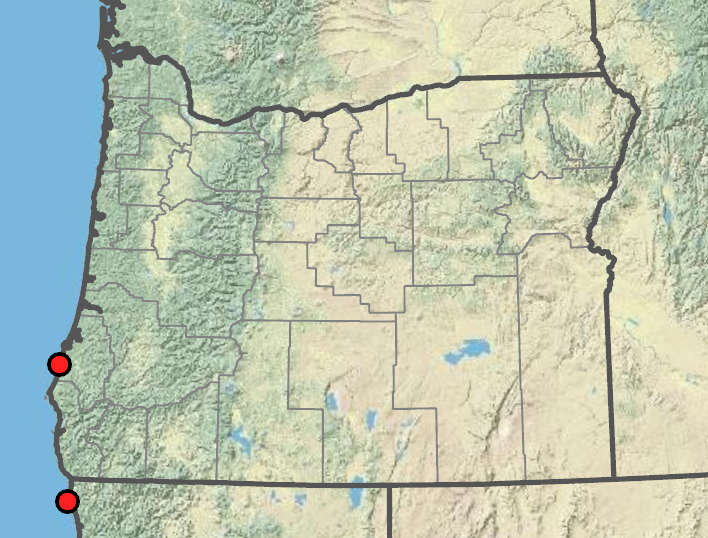|
capitate rush, leafybract dwarf rush
|
| Plants annual, 2–13.5 cm tall, unbranched. |
capillary; basal. |
1(3) terminal head-like clusters, 2–15(26) flowers per cluster; inflorescence bracts leafy and longer than inflorescence. |
tepals 6, brown; outer longer than and more acuminate than the inner; stamens 3; filaments 0.6–1.3 mm; anthers 0.2–0.6 mm; styles 0.3–0.5(1) mm. |
shorter than the tepals, brown; reddish brown or dark brown. |
0.25–0.35 × 0.15–0.2 mm, slightly reticulate (at 10×). |
=18. |
|
|
|
|
|
Moist bare ground. 50–1000 m. Est. CA; southeastern US, South America; Africa, Australia, Eurasia, New Zealand. Exotic. This species was discovered in Oregon in 2010 on the Oregon Islands National Wildlife Refuge by Dave and Diane Bilderback. The large involucral bract is distinctive among our annuals. |
Flora of Oregon, volume 1, page 274
Peter Zika |
J. acuminatus, J. anthelatus, J. articulatus, J. balticus, J. bolanderi, J. brevicaudatus, J. breweri, J. bryoides, J. bufonius, J. bulbosus, J. canadensis, J. capillaris, J. compressus, J. confusus, J. conglomeratus, J. covillei, J. diffusissimus, J. drummondii, J. dudleyi, J. effusus, J. ensifolius, J. ensifolius x Juncus nevadensis, J. exiguus, J. falcatus, J. filiformis, J. gerardi, J. hemiendytus, J. hesperius, J. howellii, J. inflexus, J. interior, J. kelloggii, J. laccatus, J. lescurii, J. longistylis, J. marginatus, J. mertensianus, J. mexicanus, J. nevadensis, J. occidentalis, J. orthophyllus, J. oxymeris, J. parryi, J. patens, J. pelocarpus, J. planifolius, J. ranarius, J. regelii, J. saximontanus, J. supiniformis, J. tenuis, J. tiehmii, J. torreyi, J. triglumis, J. trilocularis, J. uncialis |
|
